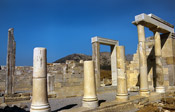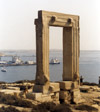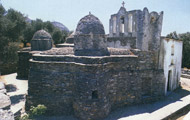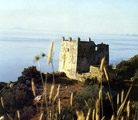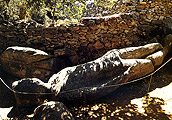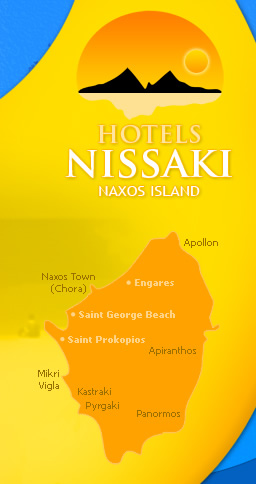 |
|
NAXOS ISLAND HISTORY The history of Naxos through centuries Naxos first flourished during Early Cycladic II period (about 2700 - 2300 BC), during which, along with the small nearby islands, it developed into one of the most important commercial and cultural centres of the period. During the later phases of the Bronze Age, there were a mixture of changes in the Aegean which resulted in new centres rising on other islands (Thera, Milos, Paros) and Naxos lost its leading position in the Aegean. Excavations over the last forty years have brought a large number of archaeological sites (Grotta, Aplomata, Pithos in Chora, Melanes, Sangri, Iria, Tsikalario in central Naxos, Panormos, Korphi t'Aroniou in east Naxos), and also the many finds that are now housed in the Naxos Museum. .
Naxos is the largest of the Cyclades islands, a wealthy place with a natural environment suitable for the development of farming and stock-raising. It is also an island with good natural harbours, a condition which has contributed much to its strong continuous cultural presence in Greece from the end of the 4th millennium BC up to day. |

